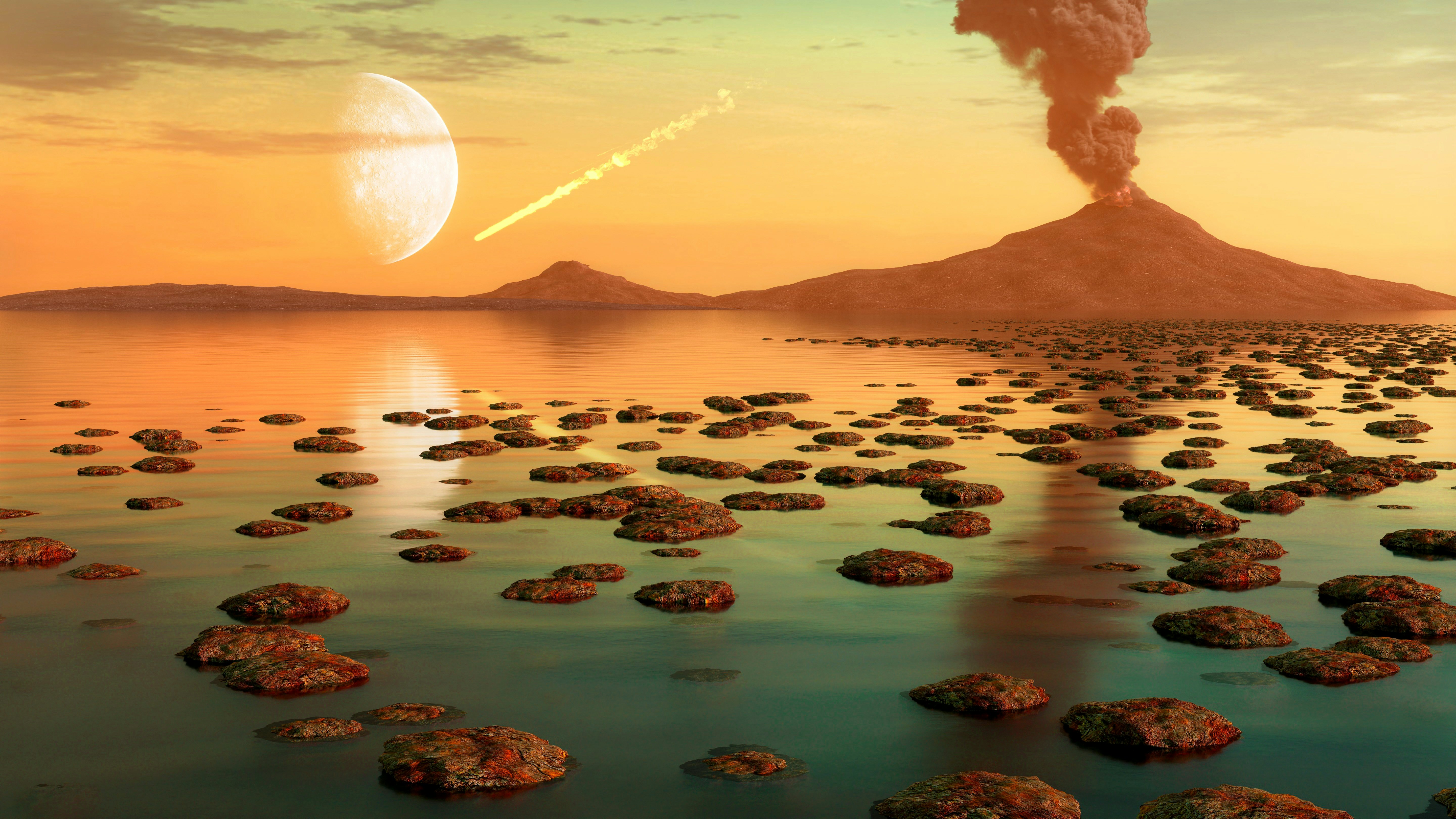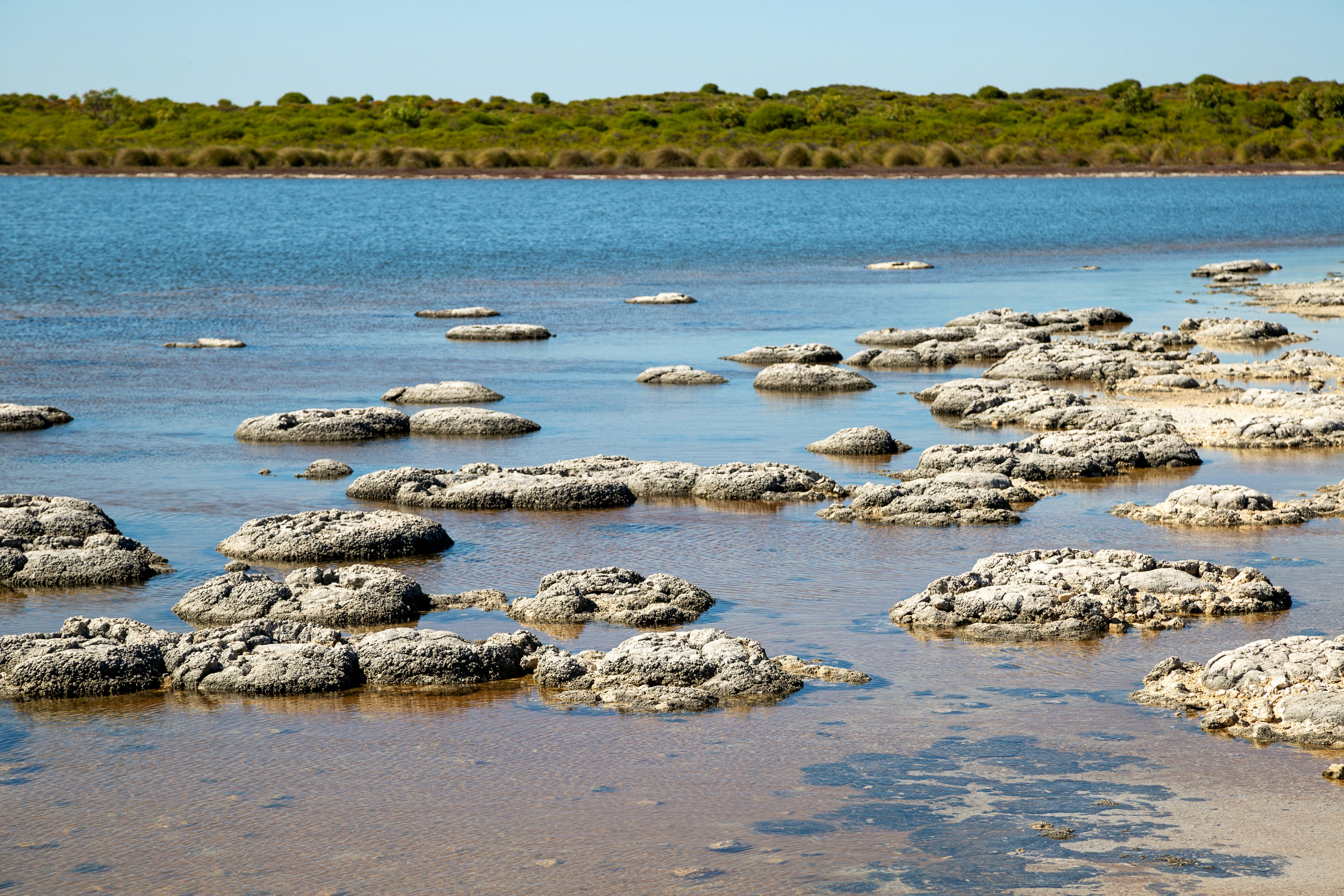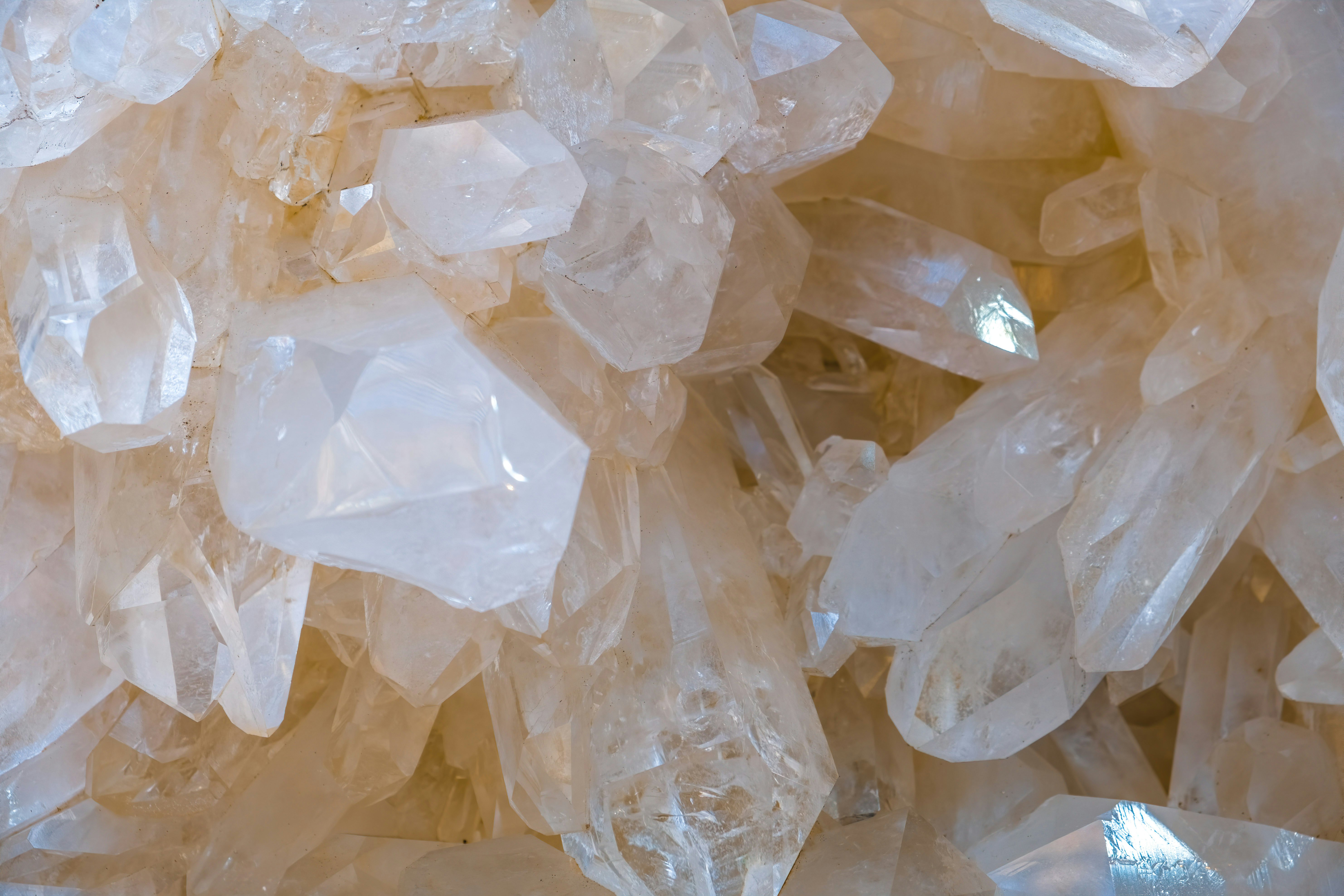
One broken piece of quartz in a physics lab could shed light on the history of life on Earth and the search for other habitable worlds.
Between two and four billion years ago, water and freshly-broken rock could have kept early Earth supplied with small amounts of oxygen — just enough to steer early life to evolve the tools to thrive in a more oxygen-rich environment. Guangzhou Institute of Geochemistry geoscientist Hongping He and his colleagues published their work in a recent paper in the Proceedings of the National Academy of Science.
The History of Oxygen on Earth
Today, most life as we know it depends on oxygen. Specifically, we need what’s called molecular oxygen: two oxygen atoms that are linked together by the electrons they’re sharing. But life on Earth evolved beneath an atmosphere without molecular oxygen. The first Earthly life lived on other chemicals, like sulfur compounds.
Despite that, genetic evidence hints that the earliest microbial life forms evolved in “weakly oxic” environments: places where there was some molecular oxygen, and some other very reactive molecules that contained oxygen, but not much. That exposure to oxygen, and to the compounds chemists call “reactive oxygen species,” may have given those early microbes a reason to evolve some important enzymes, which eventually gave them a new superpower: the ability to neutralize those reactive oxygen species and make use of molecular oxygen.
That ability came in very handy around 2.4 billion years ago, when some of these early life forms, called cyanobacteria, evolved a cool new trick: they drew in carbon dioxide and exhaled oxygen. Within a few hundred thousand years, Earth’s teeming population of cyanobacteria had pumped enough oxygen into the atmosphere to transform our planet — and the future of life.
That leaves modern, oxygen-breathing scientists with a lingering question. Where did the molecular oxygen come from before cyanobacteria started making it? A recent study suggests a simple answer: rocks.

How to Get Oxygen from Broken Rocks
In the last few years, materials scientists have realized that if you break or damage a solid chunk of material in just the right way, you can break chemical bonds and leave electrons unattached, ready to form new bonds and create new chemical reactions. And that gave Hongping He and his colleagues an idea.
The mineral quartz is made of silicon dioxide: a silicon atom and two oxygen atoms, bound by shared electrons. Hongping He and his colleagues ground down some quartz samples in the lab, then looked at the freshly-ground surfaces using a technique called X-ray spectroscopy. They saw a surface littered with broken chemical bonds, especially oxygen atoms with free electrons. Those electrons, once held between oxygen and silicon, were now available to grab hold of other nearby molecules and set off chemical reactions.
When Hongping He and his colleagues submerged the quartz samples in water, they watched as a chain of chemical reactions took place along those freshly-ground surfaces. The end results included hydrogen peroxide and molecular oxygen, both of which played an important role in influencing the evolution of life on Earth.
“It's a different approach to a problem that's been worked on for a long time — more than a half-century,” University of California San Diego chemist Mark Thiemens tells Inverse, adding, “You have this pathway to get the oxygen that you haven't taken into account. Then the next question is to fill in the blanks on that, to see how much further we can push that ball down the field.”
No one was running around with a grinder during the Archaean Period, 4 billion years ago, but frequent earthquakes, glacial activity, and erosion by waves and tides could have provided a constant supply of freshly-broken rock. About 90 percent of Earth’s crust is made of silicate minerals like quartz. It would only have provided a little oxygen, and only on a local level, but Hongping He and his colleagues suggest that’s exactly what life needed at the time.

Learning to Breathe
Hydrogen peroxide (yes, the familiar bubbly stuff you use to clean cuts and scrapes) is a pair of hydrogen atoms bound to a pair of oxygen atoms; picture a water molecule with a spare oxygen atom attached. Because that spare oxygen atom brings along an extra electron, peroxide is much less stable than water and much more eager to react with other molecules. It’s what chemists call a “reactive oxygen species.”
And that kind of chemical gregariousness can be difficult for a cell — which is, after all, just a tiny sack of chemical reactions — to handle.
Douse a colony of anoxic bacteria in hydrogen peroxide, and they’re all going to die. But if you expose them to small amounts of it over a very long period of time, natural selection may eventually produce bacteria that can handle oxygen, either by neutralizing the reactive compound or by actually using it. And that’s what Hongping He and his colleagues suggest happened thanks to broken rocks on early Earth.
Implications for Life on Other Worlds
The same process could have happened — and could be happening right now — on other worlds with rocky crusts, like Mars. More research, say Hongping He and his colleagues, could shed light on exactly how rock and water interact to produce oxygen, and reactive oxygen molecules like hydrogen peroxide and others.
“I hope that it encourages a lot of new thought and a lot of discussion. That's how we make science go,” says Thiemens. “What you hoped for with science is that you generate some interest and people go out and do experiments, do models, see how it fits, and see how it changes the [existing] global models. I suspect they will.”
In the bigger picture, Hongping He and his colleagues’ work is another example of how habitability seems to depend, in many ways, on the interaction between rock and water. It’s also a reminder that life on Earth didn’t just evolve on the planet, but with it. Geology and climate shaped the evolution of early life, and life in turn influenced the climate and geology of the planet.







